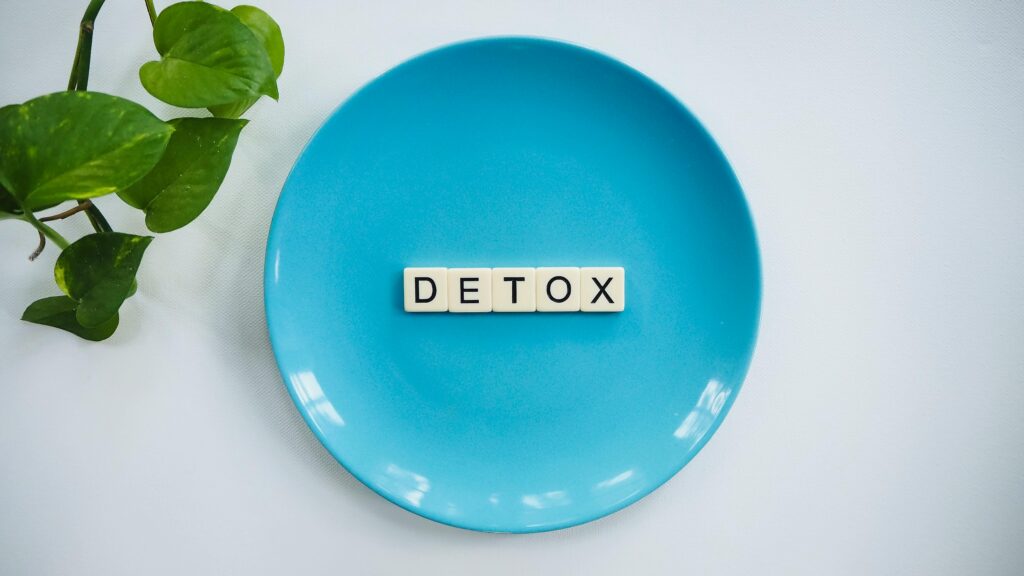Did you know the average American spends nearly 7 hours daily on digital devices? This shows how much technology is in our lives. It’s time for a digital detox. This guide will help you disconnect from devices, take back control, and improve your mental health.
By learning about digital detox, mindful tech use, and how to start, you’ll find a better balance. You’ll discover ways to limit screen time, adopt digital minimalism, and connect with the real world. This leads to a more fulfilling, productive, and balanced life.
Also see; Take a Digital Detox Challenge: Improve Focus and Restore Mental Health
Also see; 10 Proven Digital Detox Strategies to Reduce Stress and Anxiety
Key Takeaways
- Understand the signs of tech addiction and the impacts of excessive screen time on mental health
- Develop a mindful approach to technology use and create a supportive environment for your digital detox
- Discover practical time-management techniques and strategies for digital minimalism
- Explore activities and hobbies to reconnect with reality and strengthen social connections
- Learn how unplugging can reduce stress, improve sleep, and enhance mental clarity
Why Unplug? The Importance of a Digital Detox
In today’s world, we’re always connected to our devices. But this constant connection can harm our mental health. It’s important to know when we’re addicted to tech and how too much screen time affects us. Taking a digital detox can help us regain our mental health and find a new sense of balance.
Recognizing the Signs of Tech Addiction
Technology is everywhere, making it easy to get addicted. Signs of tech addiction include:
- Constantly checking your phone, even when you should be talking or doing something else
- Having trouble focusing because you keep checking your devices
- Feeling anxious or restless when you can’t use your devices
- Ignoring important things, hobbies, or friends to stay online
Impacts of Excessive Screen Time on Mental Health
Too much screen time can hurt your mental health. It can lead to more stress, anxiety, and depression. The blue light from screens can also mess up your sleep, making it harder to rest well.
| Metric | Impact of Excessive Screen Time |
|---|---|
| Stress Levels | Increased by up to 30% |
| Anxiety and Depression | Risk increased by 70% |
| Sleep Quality | Reduced by up to 2 hours per night |
By understanding the dangers of tech addiction and too much screen time, you can start to improve your mental health. Taking a break from digital devices and focusing on the present can be very healing. It’s a step towards a healthier, more balanced life.
Mindful Technology Use: Striking a Healthy Balance
In today’s world, it’s key to balance our tech use with our well-being. Mindful technology use helps us do this. It lets us enjoy tech’s benefits without its downsides.
Setting limits on screen time is a big part of mindful technology use. Make a plan for when to use digital stuff. This lets you enjoy time without screens more.
Using productivity hacks like time-blocking helps too. It keeps you focused and away from tech distractions.
Being mindful with your devices means choosing what to pay attention to. Cut out digital junk. This helps you control your digital world better.
Adding mindfulness to your day can also help. Taking breaks from tech or doing things offline keeps you grounded. It fights digital overwhelm.
“The ability to focus attention on the present moment is a key component of mindfulness, and it can help us navigate the digital landscape with greater intentionality and clarity.”
By using tech mindfully, you can have a better relationship with it. This leads to more productivity, less stress, and better overall health.
| Mindful Technology Use Strategies | Benefits |
|---|---|
| Scheduled digital breaks Notification management Device-free zones Intentional app and content curation | Improved focus and productivity Reduced stress and anxiety Enhanced work-life balance Greater mindfulness and presence |
Digital Detox Guide: A Step-by-Step Approach
Starting a digital detox needs careful planning and a smart plan. This guide will help you set goals and manage your hopes. You’ll also learn how to make a supportive space to keep you going.
Setting Realistic Goals and Expectations
The first step is to set clear, doable goals. Think about how much time you spend on tech and what you want to change. Try to cut down your social media by 30% or not use your phone at meals.
Remember, a digital detox is a slow process. Don’t aim too high to avoid getting discouraged. Start with small, easy changes that fit into your daily life.
Creating a Supportive Environment
Having a supportive space is key to your digital detox success. This means cleaning up your area, removing distractions, and making tech-free zones at home or work.
- Make some areas, like your bedroom or dining room, tech-free for relaxation and focus.
- Tell your friends and family about your unplugging strategies. Ask them to support and join you.
- Try mindfulness, like meditation or deep breathing, to stay calm and focused.
By setting realistic goals and making a supportive space, you’re ready for a successful digital detox.
Screen Time Management Strategies
In today’s digital world, controlling your screen time is key to a healthy balance. There are simple ways to manage your digital habits and boost your digital wellbeing.
Time-Blocking and Scheduling Breaks
Time-blocking is a powerful method. It involves setting specific times for using digital devices. This helps you stay focused and avoid endless scrolling.
It’s also vital to schedule breaks. Taking breaks helps you recharge and prevents burnout from too much screen time. Use these moments to move, meditate, or simply relax.
| Strategies | Benefits |
|---|---|
| Time-Blocking | Increased focus, reduced digital distractions |
| Scheduled Breaks | Mental rejuvenation, reduced stress and anxiety |
Using these strategies can improve your life balance. You’ll see better productivity, less stress from tech, and a happier overall wellbeing.
Digital Minimalism: Decluttering Your Virtual Space
In today’s world, we’re surrounded by endless information and apps. But, by following digital minimalism, you can take back control. This approach helps you find a better balance between tech and life.
Digital minimalism means cutting out digital distractions. Start by checking each app and online service. Ask if it’s really important or just a distraction.
After finding what’s unnecessary, it’s time to act. Remove unused apps and turn off notifications. Use productivity hacks like time-blocking to improve your tech-life balance. This will make your digital space cleaner and your mind clearer.
“The ability to focus is a superpower.” – Cal Newport, author of “Digital Minimalism”
Your digital life should help you, not stress you out. By embracing digital minimalism, you can make your digital space better. This leads to a more fulfilling life with a good tech-life balance.
| Benefits of Digital Minimalism | Strategies to Embrace Digital Minimalism |
|---|---|
| Increased focus and productivity Reduced cognitive overload Improved mental well-being More intentional use of technology | Conduct a digital audit and declutter Implement time-blocking and scheduling Mute notifications and limit app usage Incorporate digital sabbaths or breaks Prioritize offline activities and hobbies |
Reconnecting with Reality: Unplugging Activities
It’s key to find joy in the real world when you’re looking for digital wellness. Stepping away from screens lets you find new passions and connect with others. This can make you feel better overall.
Rediscovering Hobbies and Interests
Use your digital detox to try old hobbies or find new ones that make you happy. You might paint, read, or go for a hike. These activities offer a break from digital noise and help you find joy again.
Strengthening Relationships and Social Connections
Connecting with people is crucial when you’re unplugging. Meet friends and family in person to have real talks. Try things like board games, group workouts, or helping out. These actions help you build strong bonds and feel part of a community.
| Unplugging Activity | Benefits |
|---|---|
| Outdoor Exploration | Reduced stress, improved mood, and enhanced cognitive function |
| Journaling | Enhanced self-awareness, emotional regulation, and creative expression |
| Engaging in Hobbies | Increased sense of purpose, joy, and personal growth |
| Hosting Game Nights | Strengthened social connections, laughter, and shared experiences |
Trying these unplugging strategies can bring joy and clarity back into your life. Start this journey of digital wellness and see how it changes you for the better.
Productivity Hacks for a Tech-Life Balance
In today’s world, it’s key to balance tech use with personal life. This balance is vital for staying productive and mentally healthy. Luckily, there are many productivity hacks to help you find a good tech-life balance.
Mindfulness Techniques for Focused Work
Using mindfulness techniques is a great way to boost productivity and digital wellness. Activities like meditation and deep breathing help your mind stay focused. This reduces distractions and improves your concentration.
- Take short meditation breaks to refresh your mind and boost energy.
- Try the Pomodoro technique for focused work with breaks to avoid burnout.
- Explore different mindfulness techniques to find what works best for you.
By adopting these mindfulness practices, you can improve your focus and productivity. This lets you use your time wisely and achieve a balanced tech-life balance.
“The key is not to prioritize what’s on your schedule, but to schedule your priorities.” – Stephen Covey
Mental Health Benefits of Unplugging
In today’s fast-paced world, taking a break from digital devices is key for mental health. Stepping away from constant notifications and social media lets you transform your mental state.
Reducing Stress and Anxiety
Digital life can be stressful and anxiety-inducing. The need to stay connected online can wear you down. Unplugging gives your mind a break, helping you relax and recharge.
This digital detox helps you escape the stress cycle. You’ll feel calmer and better able to handle daily life’s challenges.
Improving Sleep Quality and Mental Clarity
Blue light from screens can mess with your sleep. Unplugging before bed helps your brain relax, leading to better sleep. This improves your focus and creativity.
Intentionally disconnecting from tech can change your life. It brings calm, focus, and well-being. By using digital wellness strategies, you can improve your mental health and enjoy a more balanced life.
Conclusion: Embracing the Power of Intentional Disconnection
Starting your digital detox journey is exciting. You’ve learned how to take back control of your digital life. This will help you grow personally and work better.
By stepping away from screens, you’ll find joy in the moment. You’ll connect with yourself and live a more balanced life. Remember, digital detox is a journey, not a quick fix.
Let this guide change your life for the better. Enjoy clearer thoughts, less stress, and better overall health. Start your digital wellness and tech-life balance journey. See how intentional disconnection can improve your life.
FAQ
What is a digital detox and why is it important?
A digital detox means not using digital devices like phones and computers for a while. It helps reduce the bad effects of too much screen time on your mind. It’s key because too much tech can make you addicted, stressed, and sleep poorly.
How do I know if I’m addicted to technology?
Signs of tech addiction include always checking your phone and feeling anxious without it. If you ignore important tasks or people because of screens, you might be addicted. If it’s messing up your life, it’s time for a detox.
What are the benefits of a digital detox?
A digital detox can make you less stressed and anxious, sleep better, and focus more. It helps you connect with others and enjoy the moment. You’ll also have more time for hobbies and a better work-life balance.
How do I create a supportive environment for my digital detox?
To support your detox, tell your loved ones you’re unplugging. Remove digital distractions from your space. Find offline activities that make you happy, like reading or exercising.
What are some effective screen time management strategies?
Manage screen time by setting specific times to use devices and taking breaks. Use apps to track and limit your screen use. Make some areas or times of the day tech-free, like meals or bedtime.
How can I practice digital minimalism?
Digital minimalism means cleaning up your online space and using only what you need. Uninstall unused apps and limit tabs. Focus on digital activities that match your goals and values.
What are some activities I can engage in during a digital detox?
Try offline activities like hobbies, outdoor fun, or spending time with loved ones. Rediscover old interests or try new ones. This helps you connect with the real world.
How can I use mindfulness to improve my productivity during a digital detox?
Mindfulness, like meditation, helps you stay focused and productive. It sharpens your attention and reduces distractions. It also helps manage stress and anxiety, improving your overall well-being.
What are the mental health benefits of unplugging from technology?
Unplugging from tech can greatly improve your mental health. It reduces stress, improves sleep, and boosts focus. It brings calm and mindfulness, leading to a healthier lifestyle.



